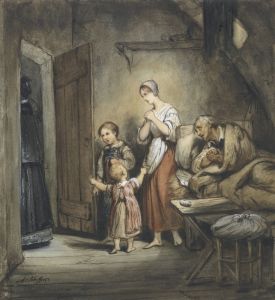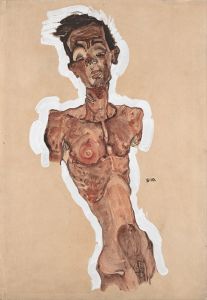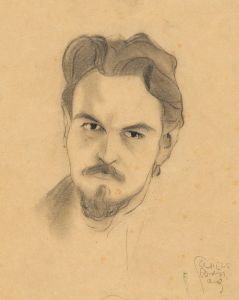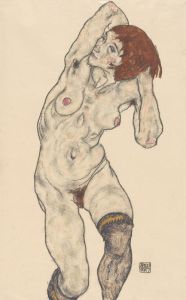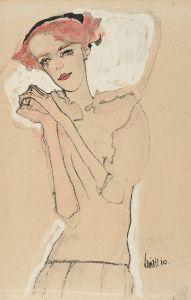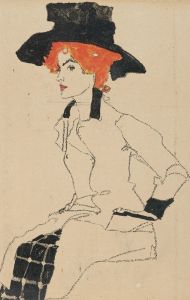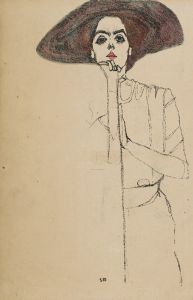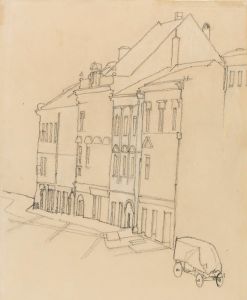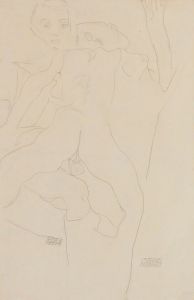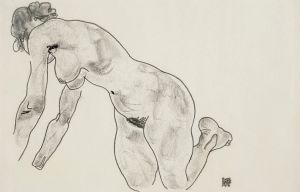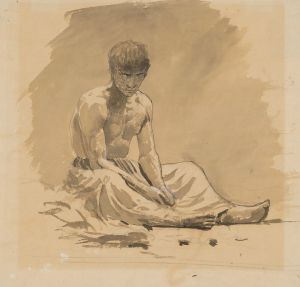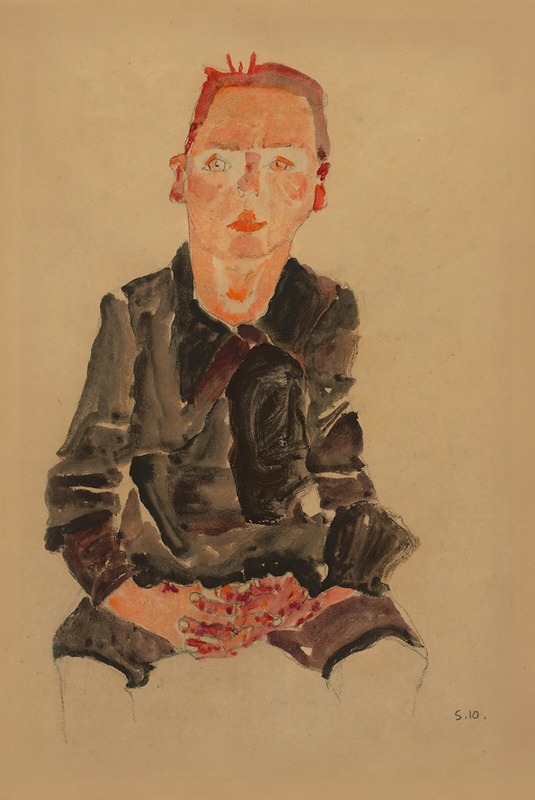
Sitzender Bub mit gefalteten Händen
A hand-painted replica of Egon Schiele’s masterpiece Sitzender Bub mit gefalteten Händen, meticulously crafted by professional artists to capture the true essence of the original. Each piece is created with museum-quality canvas and rare mineral pigments, carefully painted by experienced artists with delicate brushstrokes and rich, layered colors to perfectly recreate the texture of the original artwork. Unlike machine-printed reproductions, this hand-painted version brings the painting to life, infused with the artist’s emotions and skill in every stroke. Whether for personal collection or home decoration, it instantly elevates the artistic atmosphere of any space.
Egon Schiele, an Austrian painter known for his intense and often provocative works, created "Sitzender Bub mit gefalteten Händen" (translated as "Seated Boy with Folded Hands") in 1910. This painting is a notable example of Schiele's unique style, which is characterized by its raw emotional intensity, bold lines, and expressive use of color. Schiele was a leading figure in early 20th-century Austrian art, and his work is often associated with the Expressionist movement, although he developed a distinctive style that set him apart from his contemporaries.
"Sitzender Bub mit gefalteten Händen" depicts a young boy seated with his hands folded, a pose that conveys a sense of introspection and contemplation. The painting is rendered with Schiele's signature angular lines and stark contrasts, which emphasize the boy's form and the emotional weight of the composition. Schiele's use of color in this work is both subtle and striking, with muted tones that highlight the boy's somber expression and the overall mood of the piece.
Egon Schiele's approach to portraiture was deeply influenced by his mentor, Gustav Klimt, yet Schiele's work diverged significantly in its exploration of psychological depth and human vulnerability. In "Sitzender Bub mit gefalteten Händen," Schiele captures a moment of quiet reflection, inviting viewers to engage with the inner world of the subject. This focus on the psychological aspects of his subjects is a hallmark of Schiele's work, and it is evident in the way he portrays the boy's folded hands and introspective gaze.
The painting is also notable for its composition, which draws the viewer's attention to the boy's face and hands, creating a sense of intimacy and immediacy. Schiele's ability to convey complex emotions through simple gestures and expressions is one of the reasons his work continues to resonate with audiences today. His portraits often explore themes of isolation, introspection, and the human condition, reflecting the broader existential concerns of the early 20th century.
Egon Schiele's career was tragically cut short when he died at the age of 28 in 1918, during the Spanish flu pandemic. Despite his brief career, Schiele produced a significant body of work that has had a lasting impact on the art world. His paintings, including "Sitzender Bub mit gefalteten Händen," are celebrated for their emotional depth and innovative approach to form and color.
Today, Schiele's works are held in high regard and are featured in major art collections and museums around the world. "Sitzender Bub mit gefalteten Händen" exemplifies Schiele's ability to capture the complexities of human emotion and his contribution to the development of modern art. Through his distinctive style and exploration of the human psyche, Schiele remains an influential figure in the history of art, and his works continue to be studied and appreciated for their artistic and historical significance.





